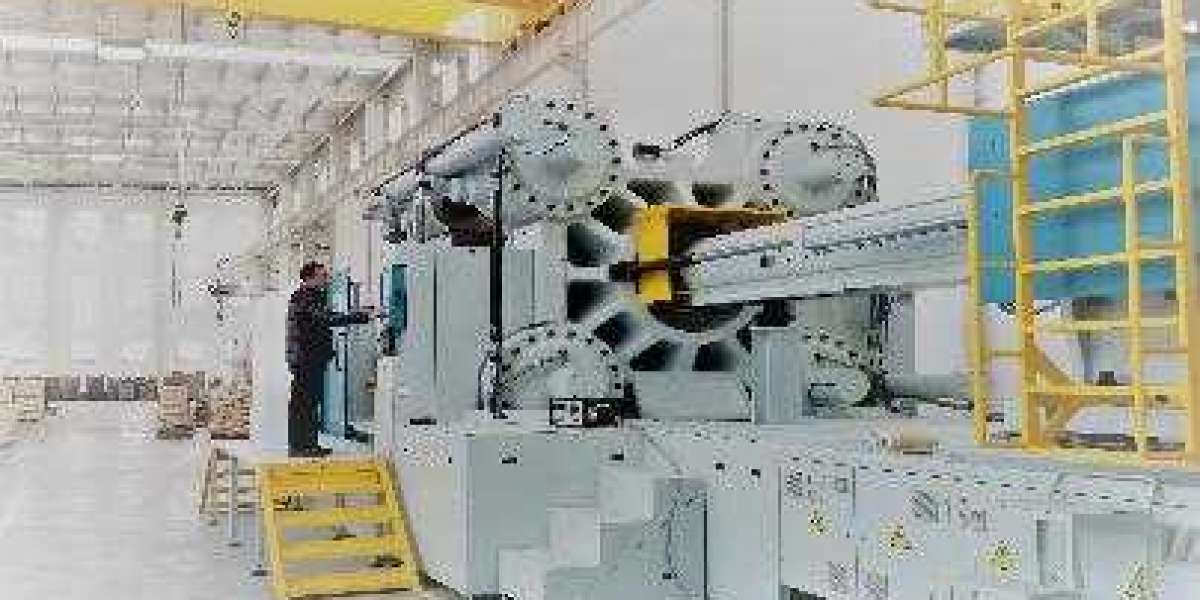In the dynamic world of manufacturing, Structural Foam Molding stands out for its ability to create lightweight yet durable products. However, achieving efficiency in this process is not just advantageous but essential for Structural Foam Molding Companies to stay competitive. Join us as we explore practical tips and strategies to streamline your structural foam molding operations and elevate your manufacturing efficiency.
Understanding Structural Foam Molding
Structural foam molding is a versatile manufacturing process that injects specialized foam into a mold, resulting in lightweight and robust components. This method finds applications across various industries, producing items like automotive components, furniture, and packaging materials. Key materials, including polyethylene and polypropylene, dictate the product's final characteristics, such as strength, density, and impact resistance.
Benefits of Efficient Structural Foam Molding
Efficiency in Structural Foam Molding extends beyond mere cost savings. Streamlining the process yields a cascade of advantages, which include the following:
Cost Savings: Efficient structural foam molding translates to cost savings by streamlining production processes, reducing material waste, and optimizing energy usage. This financial advantage enhances the overall competitiveness of Structural Foam Molding Companies.
Reduced Production Time: Efficiency directly correlates with reduced production times. Streamlining the molding process ensures quicker turnaround, allowing manufacturers to meet market demands promptly and stay ahead in dynamic industries.
Improved Product Quality: The pursuit of efficiency enhances product quality. Tighter control over process parameters and consistent material distribution contribute to producing high-quality components with fewer defects.
Enhanced Consistency: Efficiency brings about greater consistency in the manufacturing process. This consistency not only improves product quality but also strengthens the brand's reputation for delivering reliable and uniform products to consumers.
Key Considerations for Efficient Structural Foam Molding
Let's now take a look at the key considerations for achieving efficiency in structural foam molding:
1. Design Considerations
The cornerstone of efficient Structural Foam Molding lies in meticulous mold design. A well-crafted mold incorporates features that optimize the manufacturing process, such as proper venting to facilitate gas evacuation and cooling channels for temperature regulation. Thoughtful design choices significantly influence the success of the molding process, ensuring the production of high-quality components with efficiency at its core.
2. Material Selection
Choosing the right materials is a critical step in pursuing efficiency. Material properties play a pivotal role in shaping the entire molding process, affecting aspects like material flow during injection and the final product's strength and durability. The careful selection of materials, such as high-density polyethylene, and their compatibility with specific applications contribute to the overall efficiency and success of the structural foam molding process.
3. Optimizing Process Parameters
The fine art of efficient structural foam molding involves the precision of process parameters. Controlling temperature for optimal material flow, adjusting injection pressure to achieve the desired density, and optimizing cycle times are crucial elements. These adjustments enhance efficiency while contributing significantly to maintaining consistent product quality throughout the production process.
4. Tooling and Equipment Maintenance
Regular and thorough maintenance of molds and equipment is a non-negotiable aspect of efficiency in structural foam molding. Preventive measures such as cleaning, inspecting, and repairing molds contribute to their longevity and sustained performance. Structural Foam Molding Companies that invest in meticulous maintenance practices find themselves with fewer disruptions, minimized downtime, and ultimately, enhanced efficiency in their operations.
5. Quality Control Measures
Implementing robust quality control measures is paramount for achieving efficiency in structural foam molding. Inspection processes strategically placed throughout the molding cycle enable the identification and rectification of potential defects. Whether addressing issues related to material distribution, ensuring uniform cooling, or detecting irregularities in the final product, these measures contribute significantly to a smoother, more efficient production process.
6. Environmental Considerations
In an era where sustainability is gaining prominence, environmental considerations are integral to efficient Structural Foam Molding. Adopting eco-friendly practices, such as recycling materials and minimizing waste, not only aligns with global environmental goals but also resonates with a growing market of environmentally-conscious consumers. Striking a balance between efficiency and sustainability is not just a trend but a future-proofing strategy for manufacturers navigating the evolving landscape of manufacturing practices.
Future Trends in Structural Foam Molding
As technology advances rapidly, the landscape of structural foam molding is evolving.
Smart Molds: The integration of sensor technology into molds is a promising trend. Smart molds enable real-time monitoring of critical parameters, allowing for data-driven decision-making and precise control over the molding process.
Data-Driven Optimization: The future of structural foam molding lies in harnessing data for process optimization. Analyzing vast amounts of data collected during manufacturing can uncover insights for further efficiency improvements, leading to more informed decision-making.
Advanced Material Innovations: As technology progresses, expect innovations in materials specifically tailored for structural foam molding. These advancements may include materials with enhanced properties, improved recyclability, and reduced environmental impact.
Automation and Robotics: The adoption of automation and robotics in structural foam molding is on the horizon. This trend aims to increase efficiency by automating repetitive tasks, reducing manual labor, and improving overall process reliability.
Environmental Sustainability: Future trends emphasize environmental sustainability. Structural Foam Molding Companies are likely to integrate more eco-friendly practices into structural foam molding processes, aligning with global initiatives for greener manufacturing.
Manufacturers aiming to stay ahead must keep a vigilant eye on these trends, preparing to embrace the next wave of efficiency-boosting technologies that promise to revolutionize the Structural Foam Molding process and redefine industry standards.
Final Words
So basically, efficiency in structural foam molding is a comprehensive journey that involves strategic decisions in design, material selection, process optimization, and environmental consciousness. Implementing the strategies discussed in this guide can help manufacturers unlock new levels of productivity, reduce operational costs, and position themselves for success in a manufacturing landscape that demands both efficiency and sustainability. Remember that mastering efficiency in structural foam molding is not just a goal but a strategic imperative for Structural Foam Molding Companies aiming to thrive in the ever-evolving manufacturing sector.








